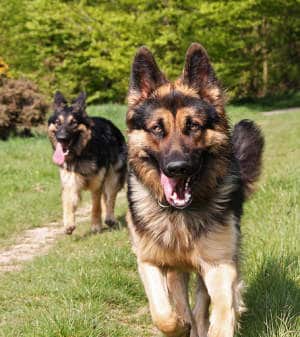
Dog Recall Problems
Imagine yourself at the off-leash dog park. From the distance, you hear “Fido Come, Fido Come”. This is the sound of a dog owner calling, or attempting to recall, their dog. As the owner continues repeating the dog recall, their voice begins to sound increasingly more distraught.
In a loud sharp tone, you now hear “Fido Get Over Here!” Out of desperation, the owner is now using his recall command in an almost corrective manner. The problem is that this disobedient dog has learned that the word COME means the end of a play session. Why would he want to come?
Most dog owners only use dog recall to control their pet. This means they are calling their dog to end a play session, bring them inside from being outside, wipe their paws or put their leash back on.
Our dog training advice is to build an alternative to that. It is important to build a strong relationship based on trust with your dog. This is why dog owners must know how they can create trust, even with their recall command.
Disobedient Dog
Here is an example where trust does not exist. Picture the dog that returns to his owner but won’t come close enough to be touched. He stays just far enough out of reach so that the owner cannot put his leash on. When we see this, we know it has invariably been created by the owner using a dog recall in situations that only entail control. Dogs are smart and they learn how close they can come (or just far enough away) so that the owner cannot reach them.
Now, let’s look at a different way to train your dog to come. Imagine this same disobedient dog with an owner that has spent time working with her dog. She has incorporated taking hold of the dog’s collar and the immediate reward is letting the collar go. There are more times than not that no strings are attached to the COME command. She hasn’t used it to end the play session, bring the dog inside from being outside, wipe the paws or putting the leash on the collar for control.
When training for a dog recall, we want a dog to respond just as if he is coming for a treat or positive affirmation. We want the dog to associate positive experiences with the come command as much as possible so we can build a trusting and rewarding relationship with the recall.
An easy way to do this is to have the recall command associated with things like food, toys, treats and affection. Positive things should be associated with the command COME. We would never call our dog to us for the purpose of scolding him.
Dog Training Advice

A great rule of thumb is to use the three-to-one method. This means for every one time you call your dog to you for the control you must then provide three positive associations to your recall. This could simply be walking up to your dog saying the command “come” while handing him a treat or using their command to start your dog’s favorite game.
The best dog training advice, in this case, is to see the thought behind the recall command. In particular, we are doing an Introduction to Recall from a relationship point of view.
There are two ways to work on dog recall training. In strict obedience training, this is the art of teaching a dog how to come to you. This means the dog learns to come straight back to you and ends in a present (sitting smartly in front of you) so you can put the leash on, retrieve an item from his mouth or you simply share affection. Alternatively, the dog could end up in the at heel position after the present with a simple heel command.
The other crucial part of training is the relationship you develop with the recall command itself. This is the art of teaching the dog to want to come to you like we have explained above by using positive association and the three-to-one ratio. Both are equally as important and should be done with as much upbeat enthusiastic energy as possible.
When you learn to work with your disobedient dog from an open well-rounded point of view, you can achieve amazing things, even an off-leash recall at the dog park.
To get more detailed dog training advice please visit our academy www.dogtraining.academy
Academy for Canine Educators


Dr. Jeff Grognet is a veterinarian and Mike Annan is a canine obedience instructor and behaviorist. Together they have created the ACE Academy for Canine Educators. They have produced a free course for shelter and rescue (though anyone can benefit from it) as well as a weekly newsletter that educates on canine (and feline) health, obedience, and behavior issues.
This article is guest-written by Dr. Jeff Grognet specially for the Russian Dog website.
By the same author:
- How to Recognize and Break Up a Dog Fight
- GDV/Bloat in Dogs – Beware This Deadly Disease!
- Dog Separation Anxiety Help and Treatment
Photo Credit 1: Яick Harris/Flickr
Photo Credit 2: MarilynJane/Flickr
Leave a Reply